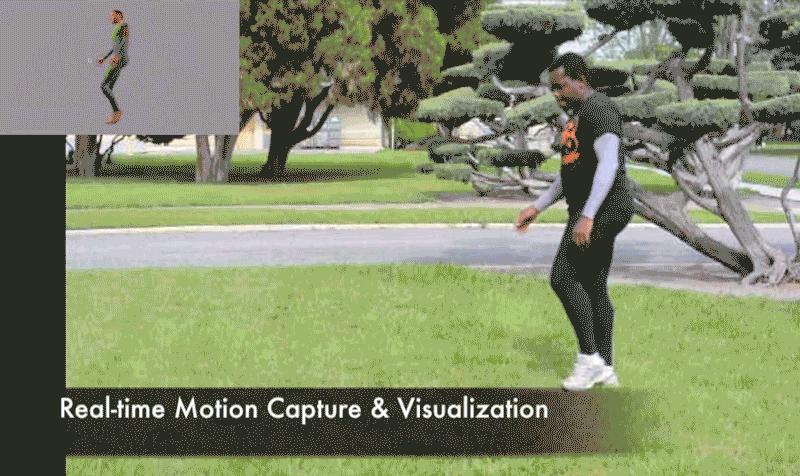Zhang’s new suit can enhance athletes’ performance with data
Adam Dove
Jun 28, 2017
When it comes to professional athletics, every little bit counts, and for centuries, athletes have been doing everything they can to get ahead. From legal means like hiring the best trainers and purchasing the best equipment, to less legal means like pharmaceutical enhancement, athletic advantages come in all forms. But thanks to CMU-SV Professor Pei Zhang, the modern athlete now has access to the newest advancement in performance enhancing technology: data.
Though Zhang’s vibration sensors were initially developed to track individuals’ movements through a building, he quickly realized they were sensitive enough to measure smaller movements, and even movements inside the body. By shrinking these sensors down and sewing them into a bodysuit, Zhang has created the Muscle Activity Recognition System (MARS).

Source: Prof. Pei Zhang
Muscle Activity Recognition System (MARS) suit
Developed in collaboration with Frank Mokaya of CMU-SV, and Cynthia Kuo, Quinn Jacobson, and Brian Nguyen of Vibrado Technologies, MARS employs real-time motion capture and visualization in any lighting. Using these vibration sensors, the suit is able to measure the micro-movements in each of the wearer’s muscles.
Using this body sensor suit to measure the fine grain vibrations of your body, we can find out which muscle you are activating...
Pei Zhang, Associate Research Professor, Carnegie Mellon University Silicon Valley
“Using this body sensor suit to measure the fine grain vibrations of your body,” says Zhang, “we can find out which muscle you are activating, how hard you are activating these particular muscles, and how tired these muscles are.”
Inside the suit are 18 sensor nodes with accelerometers, gyroscopes, and magnetometers. Using these vibration sensors, the suit maps the activation of particular muscle groups onto the on-screen avatar. When the muscles are first activated, the avatar highlights them in green, but as they fatigue over the duration of the exercise, they change to orange, and eventually red.
This level of data has never before been available to athletes and trainers, and opens up a whole new realm of possibility. By allowing athletes to monitor their muscle fatigue in real time, MARS gives them the ability to correct their posture and movements as they train. Practicing proper movements can greatly reduce the chance of injury, and help athletes to learn skills more quickly and safely.
“This technology can enable both professional and amateur athletes to accurately track the extent of their exercise,” says Zhang, “in order to push themselves to their limits, but not over.”
With Zhang’s vibration sensor suit, athletes of the future will be able to step up their game with the most powerful performance enhancer of all—knowledge.